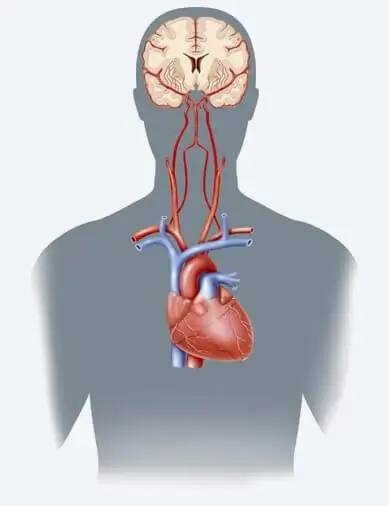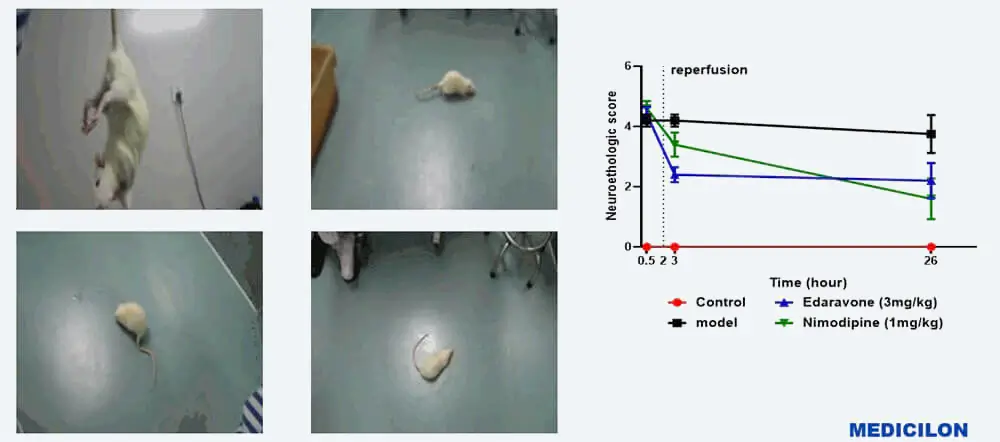 Range of Cerebrovascular Disease
Range of Cerebrovascular Disease Cardiovascular and cerebrovascular diseases generally refer to ischemic or hemorrhagic diseases of the heart, brain and systemic tissues caused by hyperlipidemia, blood viscosity, atherosclerosis, and hypertension.The annual treatment cost of cardiovascular and cerebrovascular diseases in China is RMB 540.6 billion. The annual treatment cost of cerebrovascular diseases accounts for 25.68% of cardiovascular and cerebrovascular diseases. Among them, ischemic stroke accounts for 18% and hemorrhagic stroke accounts for 7%.Stroke mainly includes ischemic stroke (transient ischemic attack, atherosclerotic thrombotic cerebral infarction, lacunar cerebral infarction, cerebral embolism) and hemorrhagic stroke (cerebral hemorrhage, subarachnoid hemorrhage).
Cardiovascular and cerebrovascular diseases generally refer to ischemic or hemorrhagic diseases of the heart, brain and systemic tissues caused by hyperlipidemia, blood viscosity, atherosclerosis, and hypertension.The annual treatment cost of cardiovascular and cerebrovascular diseases in China is RMB 540.6 billion. The annual treatment cost of cerebrovascular diseases accounts for 25.68% of cardiovascular and cerebrovascular diseases. Among them, ischemic stroke accounts for 18% and hemorrhagic stroke accounts for 7%.Stroke mainly includes ischemic stroke (transient ischemic attack, atherosclerotic thrombotic cerebral infarction, lacunar cerebral infarction, cerebral embolism) and hemorrhagic stroke (cerebral hemorrhage, subarachnoid hemorrhage).Disease Name
ICD 10
Model
Intracerebral hemorrhage
I60-I62
Intracranial autologous blood injection, subarachnoid hemorrhage
Cerebral infarction
I63
Ischemic stroke model
Stroke
I64
Cerebral thrombosis
I65
Cerebral Embolism
I66
Other
I67-I69
Other
 Pharmacodynamic Evaluation Models for Cerebral Stroke
Pharmacodynamic Evaluation Models for Cerebral Stroke- Rodent Models:Focal cerebral ischemia:middle cerebral artery occlusion/reperfusion (MCAO/R) model- suture-occluded method,Embolization,Photochemistry.Total cerebral ischaemia (TCI):Vessel Clamp Technique
- In vitro models:Oxygen-glucose deprivation (OGD)Stimuli such as hydrogen peroxide Oxidative Stress (OS)Others: Transwell to investigate BBB scale (Basso, Beattie & Bresnahan locomotor rating scale), in vitro brain slice and Neurovascular unit (NVU).
 Ischemic stroke and hemorrhagic stroke are the most commonly used pharmacodynamic evaluation systems for the cerebrovascular system. Because the pathogenesis of the middle cerebral artery occlusion (MCAO) is similar to that of human ischemic stroke, it is of great significance to create a simulated human cerebral ischemia model for the pathogenesis of cerebral ischemia and drug screening, and it is the key recommendation of the pharmacodynamic evaluation system by the National Institutes of Health(NIH) and the Stroke Treatment Academic Industry Roundtable(STAIR).
Ischemic stroke and hemorrhagic stroke are the most commonly used pharmacodynamic evaluation systems for the cerebrovascular system. Because the pathogenesis of the middle cerebral artery occlusion (MCAO) is similar to that of human ischemic stroke, it is of great significance to create a simulated human cerebral ischemia model for the pathogenesis of cerebral ischemia and drug screening, and it is the key recommendation of the pharmacodynamic evaluation system by the National Institutes of Health(NIH) and the Stroke Treatment Academic Industry Roundtable(STAIR).
 Medicilon's MCAO Model Evaluation System
Medicilon's MCAO Model Evaluation System The classic suture-occluded method is usually used to establish the model: Exposed neck vessels are isolated, and nylon threads are inserted from the external carotid artery (ECA) or common carotid artery (CCA) to enter the internal carotid artery (ICA) to block the blood supply to the origin of the Middle Cerebral Artery (MCA) and its collaterals, resulting in focal ischemia in the MCA area.
The classic suture-occluded method is usually used to establish the model: Exposed neck vessels are isolated, and nylon threads are inserted from the external carotid artery (ECA) or common carotid artery (CCA) to enter the internal carotid artery (ICA) to block the blood supply to the origin of the Middle Cerebral Artery (MCA) and its collaterals, resulting in focal ischemia in the MCA area.- Advantages of Medicilon MCAO Model Evaluation SystemModel evaluation is a critical step in testing results. Medicilon strictly follows the STAIR preclinical drug development strategy for stroke, and has a well characterised MCAO model system evaluation system:Rat and mouse MCAO models with stable lesions, high success rate and high survival rateReliable and effective evaluation of dose-effect/time-effect relationshipEfficacy evaluation of transient cerebral ischemia and permanent cerebral ischemiaComplete the investigation of various pharmacodynamic core indicators according to STAIR technical guidelinesThe model rodents could be customized with special diseases and complete activity evaluations according to customer requirements
Research Purposes Model Type / Test Method Animal Species Inspection Indicators Dose-Response & Time-Response Relationship MCAO Mouse • Infarct volume
• Brain water content
Treatment Time Window • Infarct volume
• Brain water content
• Brain volume
Behavioral Representation • Grip strength
• Rotor residence time
• Zea-longa Score
• Balance beam passing time
Overview Rat • Infarct volume
• Behavioral Scores
Anticoagulant Efficacy Capillary method Mouse Clotting time
 Investigation of Dose-Response and Time-Response Relationship - MCAO Mouse Model Evaluation System
Investigation of Dose-Response and Time-Response Relationship - MCAO Mouse Model Evaluation System- Animals:ICR mice, maleGroup: Control Group, Model Group, Positive Drug Group (Sanbexin@)Inspection indicators: The infarct volume was measured by TTC method, and the brain water content was measured by drying method.Methodology:• The right middle artery of the mice was blocked by suture method, and the suture was removed after blocking for 1 h to achieve reperfusion.• Dose-Response Investigation: Animals were given the positive drug Sanbexin@ 20, 10, 1, 0.1 and 0.01 mg/kg intravenously at 0.5h after infarction, respectively, and the dose-effect relationship was investigated.• Time-Response Investigation: Animals were given the positive drug Sanbexin@ 20mg/kg intravenously at 0.5h after infarction and 2h, 6h, 8h and 10h after reperfusion respectively, and the time-effect relationship was investigated.
- TTC StainingTCC staining is a common method for observing ischemic brain tissue. The rat brain is removed quickly, rinsed with cold saline, and quickly placed in a -20°C freezer for 10 minutes. After the brain tissue is slightly hardened, it is removed the olfactory bulb the pituitary, and lower brainstem are removed and the brain coronally slice from anterior to posterior, evenly cut into 2 mm thick brain slices., Slices are placed in 1% TTC solution, and incubated at 37°C for 30 minutes in the dark, turning every 5 minutes. TTC can react with the dehydrogenase system in normal tissue and be reduced to rose red, so the normal tissue is stained rose red, and the infarcted tissue was white.
 Dose-Effect Relationship Study (TTC and brain water content) (mean±SEM)
Dose-Effect Relationship Study (TTC and brain water content) (mean±SEM) Time-Effect Relationship Study (TTC and brain water content) (mean±SEM)
Time-Effect Relationship Study (TTC and brain water content) (mean±SEM)
 Treatment Time Window Investigation - MCAO Mouse Model Evaluation System
Treatment Time Window Investigation - MCAO Mouse Model Evaluation System- Animals: ICR mice, maleGroup: Control Group, Model Group, Positive Drug Group (Sanbexin@)Inspection indicators: Infarct volume was measured by TTC method, brain volume by drainage method, and brain water content by drying method.Methodology:• The right middle artery of the mice was blocked by the suture method, and the suture was removed after 1h, 2h and 4h of blocking to achieve reperfusion.• Treatment Time Window Investigation: Animals were intravenously injected with the positive control drug Sanbexin@ 20mg/kg 0.5h after infarction, and the treatment time window was investigated.ResultTreatment Time Window Investigation A: TTC; B: Brain Volume, C: Brain Water Content (mean±SEM)

 Neurological Recovery Investigation - MCAO Mouse Model Evaluation System
Neurological Recovery Investigation - MCAO Mouse Model Evaluation System- Animals: ICR mice, maleGroup: Control Group, Model Group, Positive Drug Group (Sanbexin@)Inspection indicators: Zea-longa score, Balance Beam Transit Time, Rotarod Dwell Time, Grip StrengthMethodology:• The right middle artery of the mice was blocked by suture method, and the suture was removed after blocking for 1 h to achieve reperfusion.•Neurological Recovery Investigation: Animals were intravenously injected with the positive drug Sanbexin@ 20mg/kg 0.5h after infarction, and the treatment time window was investigated.
- MCAO mouse model evaluation system—neural function investigationPharmacodynamic Investigation of Neurological Function: A: Zea-longa score; B: Balance Beam Transit Time
 Pharmacodynamic Investigation of Neurological Function: C: Rotarod Dwell Time; D: Grip Strength
Pharmacodynamic Investigation of Neurological Function: C: Rotarod Dwell Time; D: Grip Strength
 Rat Behavioural Examination - MCAO Rat Model Evaluation System
Rat Behavioural Examination - MCAO Rat Model Evaluation System- Animals: SD Rat, maleGroup: Control Group, Model Group, Positive Drug Group 1 (Edaravone), Positive Drug Group 2 (Nimodipine)Inspection indicators:Zea-longa score, Infarct Volume by TTC methodMethodology:• The right middle artery of the mice was blocked by suture method, and the suture was removed after blocking for 2h to achieve reperfusion.• Pharmacodynamics Study: Animals were given the positive drugs by intravenous injection at 0.5h after infarction, and the pharmacodynamic effects of the two positive drugs were investigated.
- Zea-longa ScoreNo neurological deficits:0;Paralyzed front paw cannot fully extend:1;Circling to the paralyzed side while walking:2;Tipping to the paralyzed side while walking:3;Unable to walk automatically, there is a phenomenon of loss of consciousness:4.
- Rat Behavioural Examination (Zea-longa Score and Animal Behaviour)

- Result-1: Behavioral Scores of Rats

- Result-2:TTC staining of brainCerebral Infarction Volume Investigation (TTC staining and infarct volume ratio)





 marketing@medicilon.com
marketing@medicilon.com




















